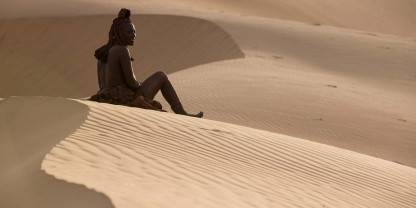Average Expert Rating
Rating Breakdown
Write a User ReviewKaokoland
Read more
need a 4WD, plenty of patience and a passion for adventure. But the rewards are significant, not least among them a safari experience of considerable depth and variety.Black Rhinos, Desert Elephants and Time Travel in Kaokoland
The unforgiving terrain means you won’t find great densities of game here, but the diversity of species is actually quite astounding considering the environment. For me, when you do spot big game here it makes it well worth the detour from Namibia’s more beaten paths.
The region, also known as Kunene, is said to be home to one of Africa’s largest populations of free-roaming black rhino; I’ve also seen desert-dwelling elephants and lions. Easier to spot are oryx, Hartmann’s mountain zebra, giraffe and other plains game.
Another fascinating aspect of this region is the iconic Himba people, whose red ochre-covered skin and distinctive copper jewelry have
Read more
made them a favorite with photographers. The Himba’s traditional pastoral culture remains largely uninfluenced by Western civilization and adds another layer of intrigue to a Namibian safari.The Harsh Home of the Enigmatic Himba
Remote and arid even by Namibian standards, the part of the far northern interior dubbed the Kaokoveld supports one person every 2 sq km, making it one of the most thinly inhabited places anywhere in Africa. There is some good wildlife viewing here, though the only large mammals we saw regularly were the handsome oryx and endemic Hartmann’s mountain zebra. An odd sight running through the heart of this arid region is the wide Kunene River, which forms the border with Angola, and attracts keen birdwatchers for the opportunity to see rarities such as Dickinson’s kestrel and Cinderella waxbill. But my overwhelming memory of the area is our encounters with the charismatic Himba, a staunchly pastoral people whose ochre-red braided hair, costumes of hides and beads, makeshift huts, and dedicated love of cattle reminds me greatly of the desert-dwelling pastoralists of the Ethiopia–Kenya border area.
Scenery To Die For
On either side of this powerful torrent (the north bank lies in Angola), you will find countless miles of empty deserts, bare rock mountains, and vast gravel planes. But despite the aridity and an overall lack of standing water, Kaokoland still manages to support a large contingent of wildlife, crocodiles included.
The Kunene, with its beautiful Epupa Falls, is, however, an anomaly in what is otherwise a seriously parched-out wilderness.
Kaokoland is an adventurer’s paradise, and, in my opinion, there is no better place for a serious self-drive 4x4 road trip. I have used
Read more
dried-out riverbeds as roads where I have encountered desert-adapted elephants, digging for water with their tusks and trunks. There’s also a chance to see desert-adapted black rhinos, as well as arid-tolerant lions. The beautiful Himba people, with their ochre-colored skin and ornate hairstyles, also call this region home.Temperatures in summer are silly, enough to melt tempers, whilst rain can be as rare as carnivorous cows. But no matter the discomforts, the magnificent scenery, beautiful people, and specialized wildlife of Kaokoland make this place a must-see destination.
Life in the Desert
The Kunene region is also rich in cultural interest. It’s home to the Himba and Herero people, whose traditional customs, developed in response to the demands of the desert, continue largely intact. I’ve been lucky enough to spend a

